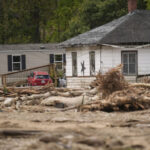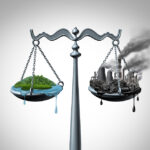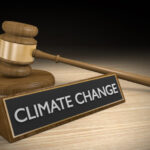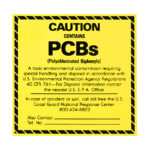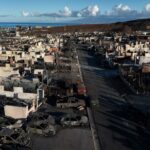A rising amount of litigation tied to the environmental and health impacts of greenhouse gas emissions prompted a question from the leader of a liability risk analytics company recently: “Is it about climate liability or the liability climate?”
Executive Summary
Even transportation companies could be ensnared in a future wave of lawsuits aimed at mitigating the effects of climate change, said executives of Praedicat in September. During a Rendez-Vous presentation they reviewed past climate cases against fossil fuel burning plants, ties to overall social inflation trends and a current crop of cases focused on the secondary effects of global warming. They also looked to the future, predicting near-term litigation events against the diesel and meat production industries—including transportation companies, and far into the future at climate effects like vector-borne pandemics and urban heatwaves.Robert Reville, chief executive officer and co-founder of Praedicat, asked the question during a 2021 virtual Reinsurance Rendez-Vous de Septembre presentation, after colleagues Stephen Jones, general counsel, and Adam Grossman, senior scientist of Praedicat, gave a summary of past waves of litigation against greenhouse gas emitters and developing waves against proximate defendants who don’t seem like natural contributors to global warming.
Reville’s reference to the “liability climate” was a suggestion that the dynamics of social inflation and litigation funding have spawned new tactics for bringing lawsuits seeking damages for climate change harms, after an initial wave of litigation failed to produce rulings against a narrow set of greenhouse gas emitters.
Jones explained that a 2011 U.S. Supreme Court ruling effectively put an end to a handful of early cases brought by state governments against energy companies and one auto maker (General Motors) with causes of action centered around federal public nuisance claims. The Supreme Court dismissed the case Connecticut v. AEP, which had been filed in 2004 by eight states, the City of New York and three land trusts against various energy companies that operated fossil fuel burning power plants. The dismissal hinged on the idea that federal common law torts regarding greenhouse gas emissions have been displaced by the Clean Air Act. In other words, since Congress has given the Environmental Protection Agency responsibility for regulating emissions in the energy sector, “judge-made law allowing federal public nuisances claims is no longer in effect,” Jones said, explaining that the High Court decision prompted a second wave of cases starting in 2017.
Praedicat has counted up 18 cases so far, making up a subsequent second wave of litigation against energy companies. In these newer cases, plaintiffs exclusively make claims under state tort law “to sidestep the federal displacement issue that derailed the cases in the first wave,” Jones said. There are 140 unique defendants in these cases associated with 60 different parent companies in the energy sector.
Focusing in on the timing of the start of the second wave—circa 2017, or six years after the Supreme Court ruling—Reville said that proliferation of cases occurred “around the same time that we’ve seen more generally a new rise of mass tort litigation in the United States. It happens to coincide with the timing of the rise of Roundup litigation [and] of the opioids litigation,” Reville said, asking Jones and Grossman whether they thought advances in climate science or litigation funding fueled the newer cases.
There is “better science to support these claims, but it’s absolutely also about the litigation environment,” Jones said, noting that, similar to the situation with opioids litigation, the second wave of climate liability cases involved more cities and counties as plaintiffs as opposed to states. “That means more numerous plaintiffs. It’s more attractive for litigation finance,” he said.

“A proliferation of climate cases occurred around the same time that we’ve seen more generally a new rise of mass tort litigation in the United States. It happens to coincide with the timing of the rise of Roundup litigation and of the opioids litigation.”
Robert Reville, Praedicat
“With litigation funding ramping up and providing the resources to take on these really large cases, there’s few that are larger,” said Grossman, who went on to share Praedicat’s insights about a third wave of cases developing in the not-too-distant future in which meatpackers, trucking companies and makers of diesel engines could soon be added to the list of defendants. And even further into the future, landlords, builders, golf courses and nursing homes could be targets of litigation emerging out of the consequences of climate change, Grossman went on to reveal.
Just one category of cases in the potential next wave of litigation—those naming users and makers of diesel engines—will amount to $84.3 billion in damages, Grossman said, revealing the result of a Praedicat model of potential litigation. While the $84 billion figure tallies economic damages rather than just insurance losses, and it is much lower than insurance industry losses for asbestos, “the reinsurance industry has its work cut out for it,” he said, explaining the clash of general liability and securities class actions combine in the scenario that produced the estimate.
Is Toxic Baby Food a Climate Risk?
Before Grossman explained the third wave in some detail, Jones gave specifics about the progress of the second wave of cases, as well as a set of cases arising from climate change impacts against utility companies and baby food makers.
He said that although most of the second-wave cases were initially filed in state courts (in attempts to skirt around the federal displacement issue that doomed the four first-wave cases), all of them have been removed to federal court. Current battles center around whether the removal itself was proper. “Defendants are making the case that federal regulation of greenhouse gas emissions preempt state climate torts, and thus these cases should all be decided in—and ultimately dismissed—by federal courts,” Jones said.
In June, the Ninth Circuit rejected the theory that the Clean Air Act preempts state climate torts, at least as a basis for removal to federal court, Jones said, also noting that the Supreme Court denied review of the Ninth Circuit’s decision. “So, at least in the Ninth, this is the law of the land. And although there are other bases for removal that are still being argued, it appears this wave of cases may overcome one major hurdle that was fatal for the first wave.”
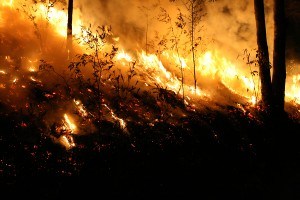 Speaking just one day before the firm Singleton Schreiber McKenzie & Scott announced that it has filed two new lawsuits on behalf of nearly 200 plaintiffs alleging that utility company PG&E caused California’s Dixie Fire, Jones identified wildfire litigation as one of two additional types of climate lawsuits—lumping them together with toxic baby food lawsuits under a category he termed “secondary effects litigation.” The “secondary effects” suits are filed against defendants who, unlike the fossil fuel companies and auto makers named in earlier cases, “played no role in causing climate change.” Instead, power utilities and landscaping companies, responsible for clearing brush around the power lines, “failed to protect or failed to prevent [damage] from the effects of climate change,” Jones said.
Speaking just one day before the firm Singleton Schreiber McKenzie & Scott announced that it has filed two new lawsuits on behalf of nearly 200 plaintiffs alleging that utility company PG&E caused California’s Dixie Fire, Jones identified wildfire litigation as one of two additional types of climate lawsuits—lumping them together with toxic baby food lawsuits under a category he termed “secondary effects litigation.” The “secondary effects” suits are filed against defendants who, unlike the fossil fuel companies and auto makers named in earlier cases, “played no role in causing climate change.” Instead, power utilities and landscaping companies, responsible for clearing brush around the power lines, “failed to protect or failed to prevent [damage] from the effects of climate change,” Jones said.
Stephen Jones, Praedicat
As with oil companies in earlier cases, this litigation has spawned follow-on securities class actions against PG&E and Southern California Edison for misleading investors on wildfire risk, Jones noted. (PG&E’s failure to safely maintain electrical equipment has been blamed for some of the deadliest wildfires in California, and the utility negotiated billions of dollars in settlements during a period of bankruptcy that ended last year.)
Explaining the link between climate change and toxins found in baby food, Jones said that more frequent drought conditions have produced greater concentrations of arsenic, a chemical that naturally occurs in soil. In addition, elevated temperatures can cause rice harvests to pick up increased levels of arsenic. “It is predicted that as much as half of the global production of rice will have arsenic levels that may be dangerous to children over the next 40 or 50 years,” Jones said.
A mass litigation event officially began earlier this year spurred on by a congressional report on arsenic levels in baby food. (Editor’s Note: In addition to being a known carcinogen for adults with long-term exposure, the report notes that arsenic can have a “significant negative effect on neurodevelopment” in children.)
The Third Wave: Time to Act
Beyond bucketing climate litigation trends in waves, Grossman referred to a different categorization of emerging risks that Praedicat frequently uses to highlight levels of action that insurers and reinsurers need to be taking to react to them, putting an upcoming third wave into the “emerging damage” phase. (Related Article: “Emerging Damage: The Case of Melamine.”)
The “emerging damage” phase, he explained, lies between an early “emerging interest” phase, for which there is less than a 1 percent likelihood of litigation starting in the next several years, and the “emerging litigation” phase, where cases have already landed in the courts. Both the direct litigation against oil and gas companies in the first and second waves, and the wildfire and baby food secondary effects litigation fall in “emerging litigation” phase. “It’s time to defend against the claims,” Grossman said.

“There are legal scholars who are publishing law review articles every day that suggest where litigation could go and thinking up new ways of bringing cases and phrasing causes of action.”
Adam Grossman, Praedicat
In the middle phase of “emerging damage,” there’s an opportunity for insurers and reinsurers to do more. The risk is mature enough so that insurers can manage it by taking underwriting and capital management actions, “but not so mature as to present an immediate risk of mass litigation” or a huge loss event hitting carriers’ books, Grossman said. In short, “it’s really time to act,” he told insurers and reinsurers viewing the virtual session.
Praedicat gets a read on these risks by analyzing both scientific research and legal scholarship. “There are legal scholars who are publishing law review articles every day that suggest where litigation could go and thinking up new ways of bringing cases and phrasing causes of action,” he said. In particular, moving further beyond oil and gas companies, plaintiffs lawyers are setting their sights on ports, trains, buses, trucking companies and makers of diesel engines in what the Praedicat executives called “proxy litigation.”
Here, plaintiffs aren’t contemplating bringing suits “about climate change.” Instead, they’ll attempt to “extract huge dollar sums” from defendants and use it to mitigate climate change, Grossman said, noting that U.S. Vice President Kamala Harris sued the ports of Los Angeles and Long Beach when she was California’s attorney general, alleging that diesel emissions increased cancer and other health risks for people living near the ports.
Said Grossman: “Diesel litigation could become the next opioids [or] the next tobacco,” explaining that very small particles (PM2.5) get stuck in people’s lungs and increase risks of cardiovascular disease and autism. Autism brings huge cost to state and local governments for special education, he said, drawing a parallel to state government suits aimed at recovering disease costs in the opioid and tobacco litigation worlds.
Turning to another industry sector that’s a ripe target for both direct climate litigation and proxy litigation, Grossman displayed the cover page of an article titled “Animal Agriculture Liability for Climatic Nuisance: A Path Forward for Climate Change Litigation?” (Daniel E. Walters, Regulation Fellow, University of Pennsylvania Law School, 2019, Colum. J. Envtl. L.) “Section Two is directly about how suing animal agriculture for greenhouse gas emissions and public nuisance is meant to get around displacement from the Clean Air Act,” he said.
Grossman cited past research finding that roughly one-third of greenhouse gas emissions are from agriculture, taking into account the entire production chain, which includes the making of fertilizer through the packaging and transportation of food. Sixty percent of that third is attributable to meat production in general, with “industrial meat” being the largest contributor, he said, referring to large feeding and slaughterhouse operations.
In addition to directly suing meat producers directly for greenhouse gas emissions, proxy litigation mimicking the suits for opioids center on the ill effects of meat consumption and the impacts to the health budgets of states and localities, he said.
Here, the defendant footprint expands beyond meatpacking and industrial livestock industries to include transportation and retail supermarkets “all up and down the food supply chain,” and even the makers of fertilizers for growing the food that the animals eat.
Summing up the emerging damage scenarios, Reville said insurance industry clients are facing an environment with increased risk of large-scale events within lines of business, and increased risk of clash across lines. “Just simply counting the number of articles in legal scholarship network that cite climate and liability, that’s tripled since 2014, which is an indication of an increased interest from the legal community.”
For reinsurers, “there’s a lot to take on” in terms of helping insurers to manage the risks for starters, Grossman said. “There’s also a huge opportunity to innovate and bring new products into the market, be they named-peril, be they insurance-linked securities and beyond.”
“These are risks that we can see coming, [and] the industry is here to help manage risk, not to just avoid it,” he said.
(Related Articles: “‘Attribution Science’ May Help Plaintiffs Benefit Push Climate Lawsuits Farther” and “Is Climate Litigation Covered By Insurance?”)




















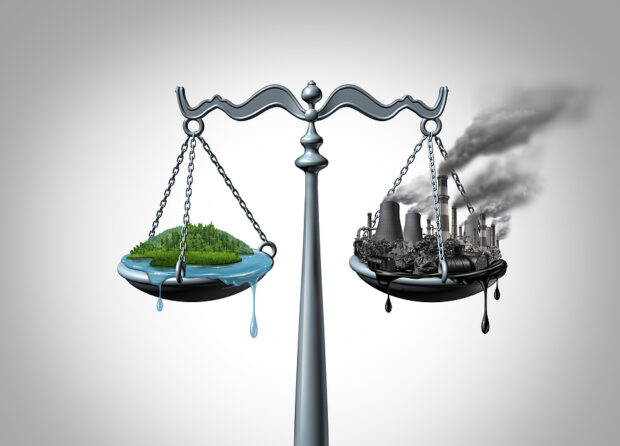

 Market Softening Accelerates During 1/1/2026 Re Renewals
Market Softening Accelerates During 1/1/2026 Re Renewals  Why the Middle Market Matters and How Insurers Can Capture It
Why the Middle Market Matters and How Insurers Can Capture It  Rebuilding Negotiation Talent: Why This Skill Is Missing and How to Fix It
Rebuilding Negotiation Talent: Why This Skill Is Missing and How to Fix It  Berkshire Hathaway Enters Post-Buffett Era as Share Prices Fall
Berkshire Hathaway Enters Post-Buffett Era as Share Prices Fall 
